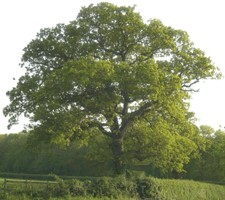TREES AND THE LAW
Protected trees and woods
Not all trees are protected. To be protected, a tree must meet one or more of these three conditions:
- A Tree Preservation Order or TPO has been made at some time to cover that tree;
- A planning condition has been made at some time to cover that tree;
- The tree is within a conservation area.
| Tree Preservation Orders (TPOs) are made under the Town and Country Planning Act 1990 and the Town and Country Planning (Trees) Regulations 1999. Planning conditions are normally conditions which are applied when planning applications affect existing trees – they are normally only temporary (for up to two years) but some last for longer, and indeed some have no time limit at all, so even if your tree is in an area where no planning permission has been granted recently it is worth checking. |  |
You also must give notice if you want to remove or prune a tree in a Conservation Area, so that the Council can consider whether the tree should be protected by a TPO.
Your solicitor should have told you about any protection to your trees when you purchased your property and undertook a local authority search, but you can contact the Council’s Protected Trees Service to check what protection applies to any tree. If your trees are protected, you need written permission to remove them, or to do any tree surgery, even minor pruning.
Your solicitor should have told you about any protection to your trees when you purchased your property and undertook a local authority search, but you can contact the Council’s Protected Trees Service to check what protection applies to any tree. If your trees are protected, you need written permission to remove them, or to do any tree surgery, even minor pruning.
To make an application for works to a tree protected by a TPO, planning conditions or by being within a Conservation Area, you should get a form from the Seaclose offices. Your tree contractor can also apply on your behalf. It is not the Council’s role to provide advice - the landowner is responsible for obtaining professional advice on your trees.
After your application is received, a decision should be made within 6 weeks for Conservation Areas and 2 months or 8 weeks (depending on when the TPO or condition was made) for TPOs and planning conditions. If you want to remove trees, you will usually be required to plant replacements.
If you remove protected trees, or do work to them without permission, you could be prosecuted.
Tree work and the law
The Provision and Use of Work Equipment Regulations 1998
(PUWER 98) requires all employed workers who use a chainsaw to work on or in a tree to be competent to do so. They should have received appropriate training and obtained a relevant certificate of competence or national competence award. It is suggested that tree contractors should do refresher training every five years. This does not apply to non-employees, for example a landowner working on their own land.
The Lifting Operations and Lifting Equipment Regulations 1998
(LOLER 1998) also apply to tree surgery - for example, when somebody is climbing a tree, there should be somebody else available on site who has been trained in tree rescue; tree contractors should have their equipment, such as ropes, regularly inspected by somebody independent.
The Health and Safety at Work Act 1974 requires all companies to have a health and safety policy, which must be written if there are five or more employees.
The Health & Safety Executive (HSE) administers health and safety legislation and sets guidelines.
Wildlife protection
Some species and habitats are protected by law under the Wildlife and Countryside Act 1981 and you could be prosecuted for damaging them or instructing somebody else to do so. For example, you should not tell a contractor to remove a tree or to do tree surgery which would destroy shelter for bats, red squirrels, dormice, or nesting birds.
Managing woods
Woods - especially ancient woods - are important habitats. Some woods are protected under the Wildlife and Countryside Act 1981. Woods may also be protected by Tree Preservation Orders – check and consent before you do any work.
Under the Forestry Act 1991 if you want to remove more than 5m3 of timber you will need a felling licence - contact the Forestry Commission
You may find it helpful to join the Small Woods Association, which is an independent group run by and for small woodland owners.
For advice
Contact a local tree consultant, or ask
Arboricultural Advisory & Information Service (AAIS)
Tree Helpline 0897 161147 (calls cost £1-50 / minute).
Books about trees and the law
| BSI | BS 3998:2010 Recommendations for Tree Work | 2010 |
| BSI | BS 5837:2005 Guide for Trees in Relation to Construction | 2005 |
| DCLG | Protected Trees | 2004 |
| M Dobson & D Patch | Trees in Dispute | 1997 | AAIS / Tree Advice trust |
| HSE | PUWER 98: How the Regulations apply to agriculture and forestry | 1999 |
| HSE | LOLER: How the Regulations apply to arboriculture | 2000 |
| HSE | Chainsaws at Work | 2000 |
| C Mynors | The Law of Trees, Forests and Hedgerows | 2002 |
Page last updated on: 14/04/2011





